
home > research > DNP
Overhauser Dynamic Nuclear Polarization (DNP)
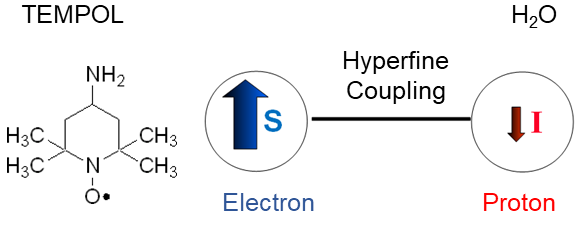
|
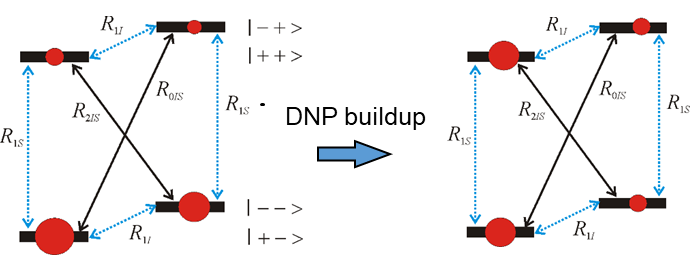
|
|||
|
Energy level diagram for electron and proton spins Ball sizes are proportional to spin populations |
Populations at Bolzmann thermal equlibrium with depicted transition probabilities for nuclei |
Populations at saturation of EPR spin states with depicted transition probabilities for nuclei |
||
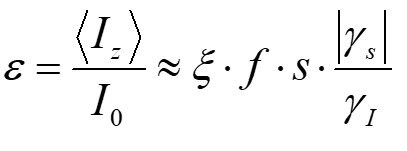
|
|
DNP at 9.4 T (400 MHz NMR / 260 GHz EPR) |
|
Helix DNP probehead [2]: application to Malonic acid [3] |
|
Top part of the helix DNP probehead fabricated at FB14, Goethe University 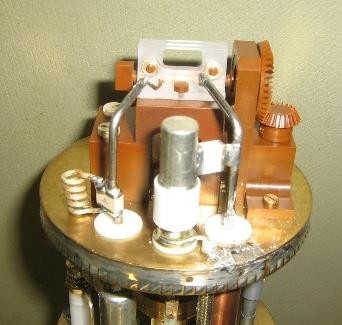 Sample volume up to 10 nl of aqueous solution placed in 50 µm capillary |
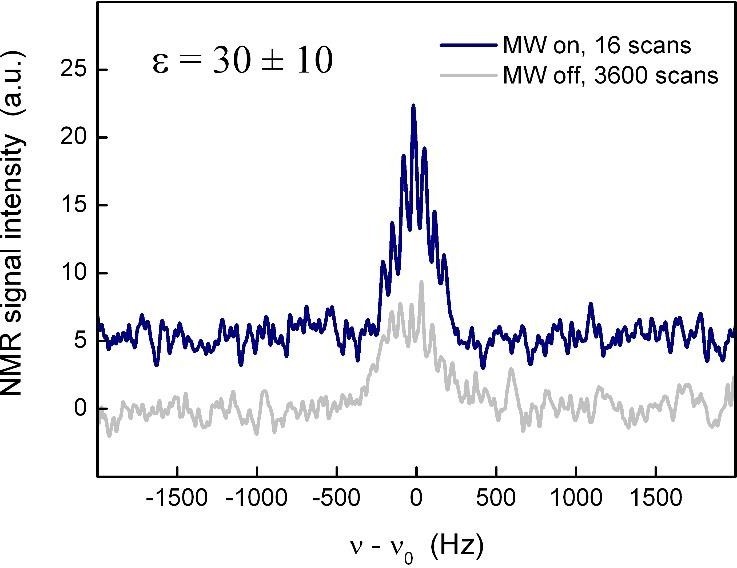 Malonic acid in CCl4 |
| Stripline-FabryPerot DNP probehead: application to lipid bilayers [4] |
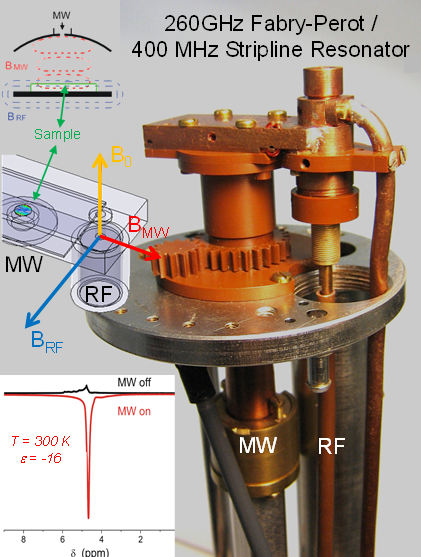
Top part of the FabryPerot DNP probehead. Sample volume up to 200 nl |
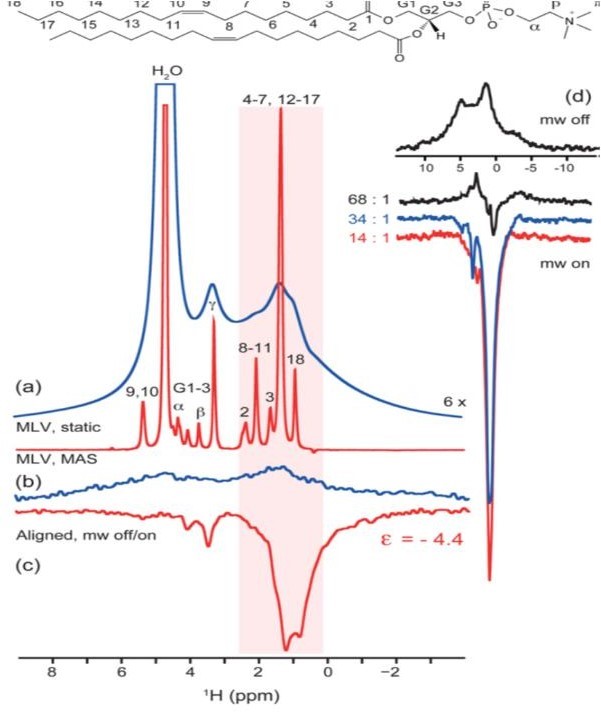
|
(a) 1H NMR of DOPC lipid bilayers. (b) 1H NMR spectrum of DOPC aligned at stripline, doped with TEMPOL radical. (c) MW irradiation (5.6 W), DNP enhancement ɛ = −4.4 for the acyl chain proton resonances. (d) ɛ increases with the amount of TEMPOL in lipid. |
DNP for MRI applications |
- can be improved by administration of a MRI contrast agents (gadolinium complexes) but with a risk of side effects
- DNP is promising to get even better contrast by injecting hyperpolarized water
|
In-bore DNP polarizer for MRI at 1.5 Tesla [5] can produce upto 3 ml/min continuous flow of hyperpolarized water |
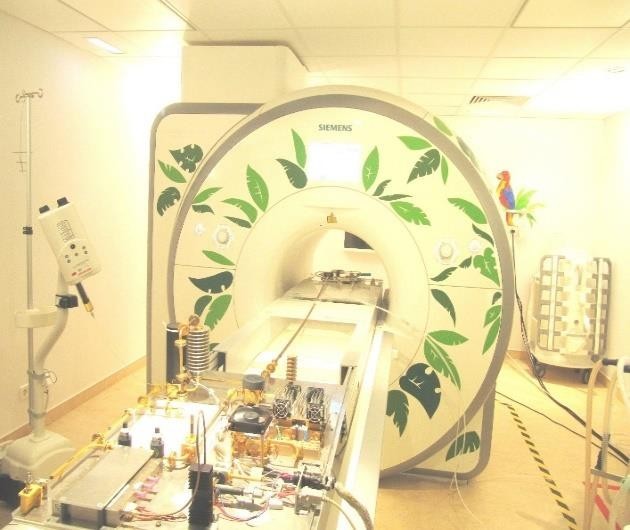 AERA Siemens MRI scanner equipped with DNP polarizer |
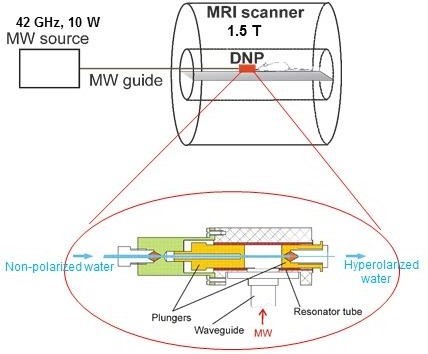
|
| MRI DNP on phantoms |
| Aorta model[6] | ||
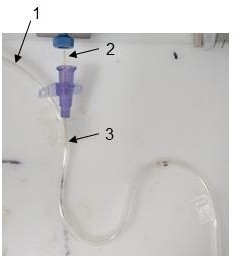 1 - PE tubing (ID =1 mm) 2.4 ml/min water flow 2-quartz capillary (ID = 0.15 mm) 1.2 ml/min DNP polarized substrate (30 mM TEPOL) 3 – injection point |
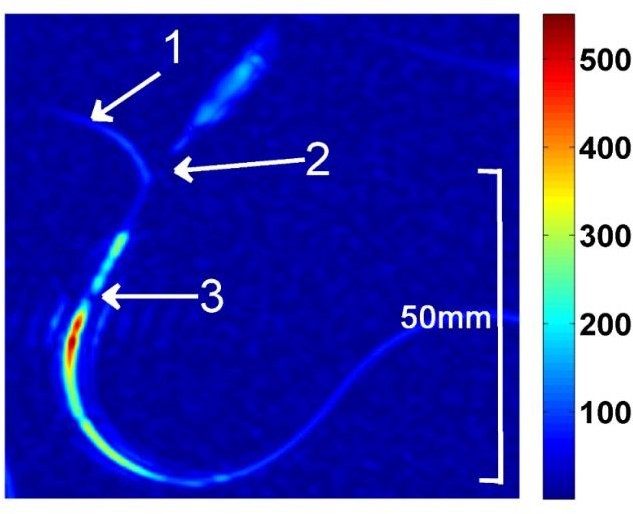 Pulse sequence 2D GRE; TR 200 ms, SE 1.46 ms TA 40 sec ε(CNR)=5 |
| DNP enhanced contrast of aorta in mouse (ex-vivo experiment) |
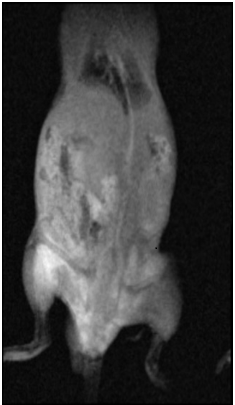 before DNP (microwaves OFF) |
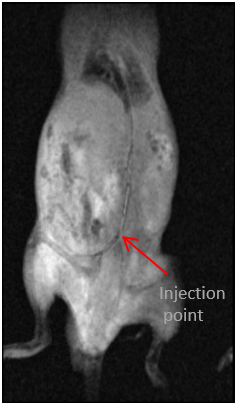 under DNP (microwaves ON) |
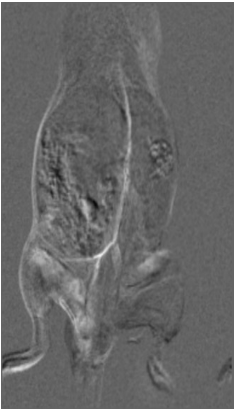 subtraction |
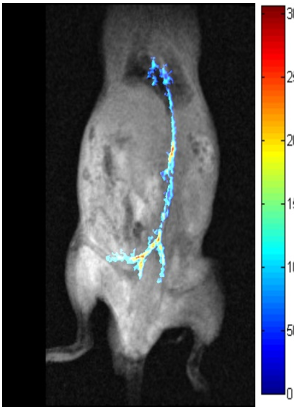 filtered signal from c) placed on top of image a) |
References:
[1] Sezer, D., Prandolini, M. J. and Prisner, T. F.(2009),
Dynamic Nuclear Polarization Coupling Factors Calculated from Molecular Dynamics Simulations of a Nitroxide Radical in Water.
Phys. Chem. Chem. Phys., 11, 6626 - 6637.
doi: 10.1039/B905709A ;
[2] Denysenkov, V. P., Prandolini, M. J., Krahn, A., Gafurov, M., Endeward, B. and Prisner, T. F. (2008),
High-Field DNP Spectrometer for Liquids.
Appl. Magn. Res., 34, 289 - 299.
doi: 10.1007/s00723-008-0127-3;
[3] Orlando, T., Dervisoglu, R., Levien, L., Tkach, I., Prisner, T.F., Andreas, L.B., Denysenkov, V.P. and Bennati, M. (2019), Dynamic Nuclear Polarization of 13C
Nuclei in the Liquid State over a 10 Tesla Field Range. Angew. Chem. Int. Ed., 58, 1402–1406
doi: 10.1002/anie.201811892
[4] Jakdetchai, O., Denysenkov, V., Becker-Baldus, J., Dutagaci, B., Prisner, T. F. and Glaubitz, C. (2014),
Dynamic Nuclear Polarization-Enhanced NMR on Aligned Lipid Bilayers at Ambient Temperature. J. Am. Chem. Soc., 136, 15533 - 15536
doi: 10.1021/ja509799s
[5] Krummenacker, J., Denysenkov, V., Terekhov, M., Schreiber, L. and Prisner, T. F. (2012),
DNP in MRI: An in-Bore Approach at 1,5 T.
J. Magn. Reson., 215, 94 - 99.
doi: 10.1016/j.jmr.2011.12.015
[6] Denysenkov, V., Terekhov, M., Maeder, R., Fischer, S., Zangos, S., Vogl, T. and Prisner, T. F. (2017),
Continuous-Flow DNP Polarizer for MRI Applications at 1.5 T.
Sci. Rep., 7, 44010
doi: 10.1038/srep44010
| Last modified: May 07, 2019 | Impressum / About / Legal Notice | Datenschutzerklärung |
Prisner LOGS
Webmail
Internal
|